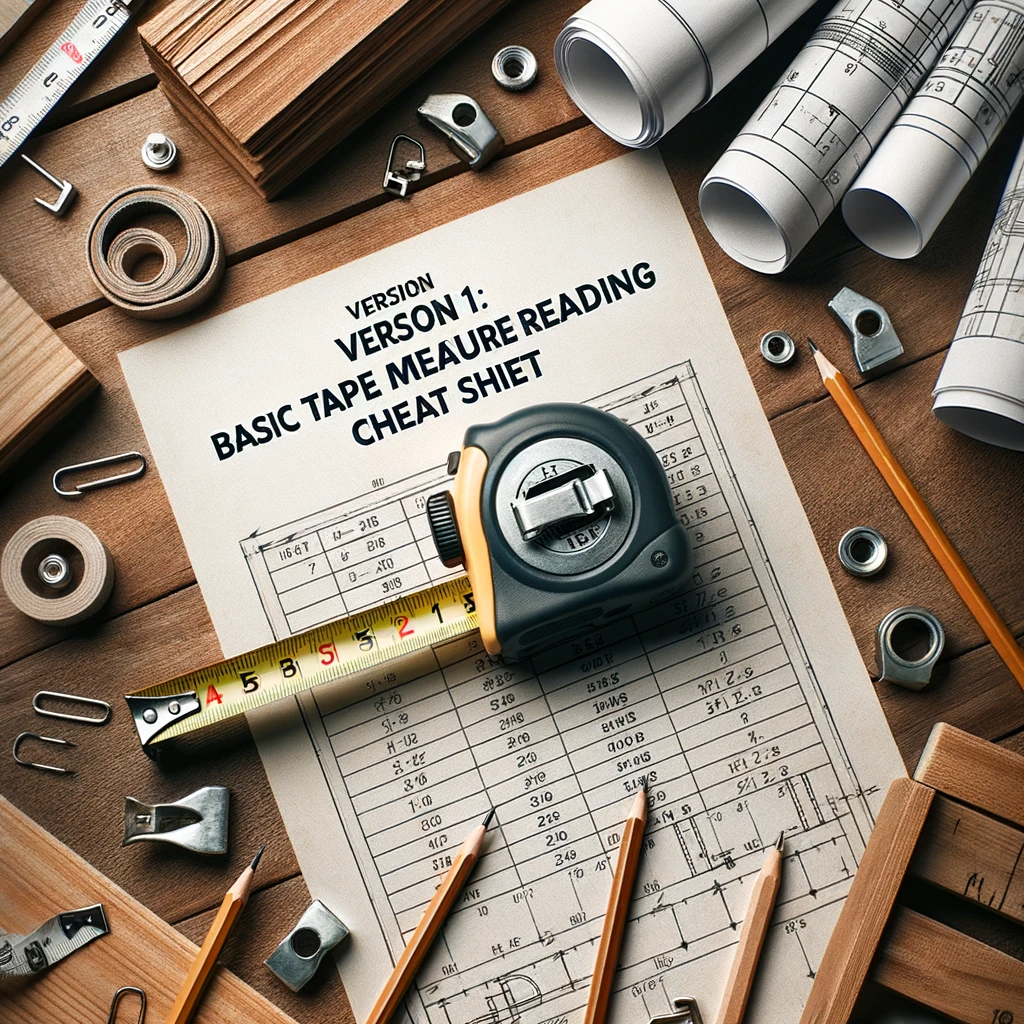Cheat Sheet for Basic Tape Measure Reading
=== Inches and Feet ===
Every tape measure is marked with numbers that typically represent inches and feet. Here’s how to decipher them:
– **Whole Feet Markings**: These are often the longest lines on the tape and may be accompanied by a number followed by a prime symbol to denote feet (e.g., 1′, 2′, 3′, and so on).
– **Half-Inch Markings**: Halfway between the whole inch numbers are slightly shorter lines representing the half-inch marks (e.g., 1/2″, 1 1/2″, 2 1/2″, etc.).
– **Inch Markings**: These are numbered and are the second-longest lines, spaced apart by equally long segments. Each number without a prime symbol represents inches (e.g., 1″, 2″, 3″, etc.)
=== Fractions of an Inch ===
Understanding fractions is crucial for precision. Each inch is divided further into 16 segments, indicating:
– **Smallest Fraction**: 1/16″ – these are the shortest lines on the tape.
– **Slightly Longer Fraction**: 1/8″ or 2/16″ – twice as long as the 1/16″ marking and located midway between the 1/16″ lines.
– **Medium Fraction**: 3/16″ – one segment longer than the 1/8″ marking.
– **Quarter Inch Fraction**: 1/4″ or 4/16″ – signifies one quarter of an inch and is usually a prominent marking.
… This pattern continues up to 15/16″.
=== Red Numbers ===
Red numbers or lines on a tape measure are significant and here’s why:
– **Foot Indication**: These often represent the whole foot number. For instance, if you see a red ‘1’, it usually stands for 1 foot. Similarly, ‘2’ would mean 2 feet, and so on.
Remember, using a tape measure efficiently requires practice. The more you measure, the quicker you’ll get at reading and understanding the markings!
